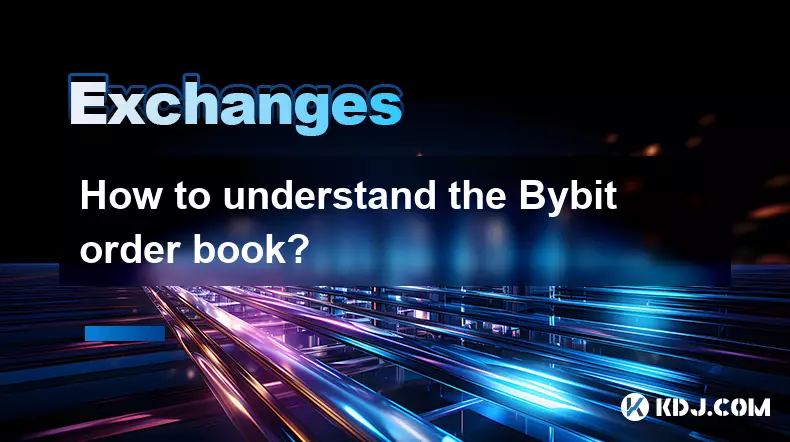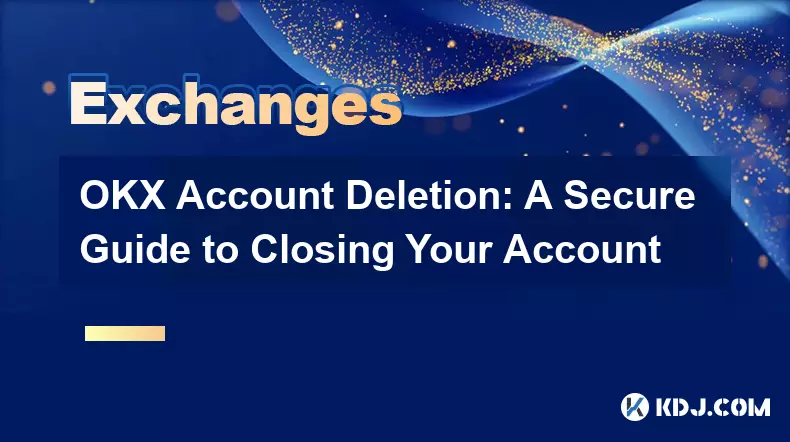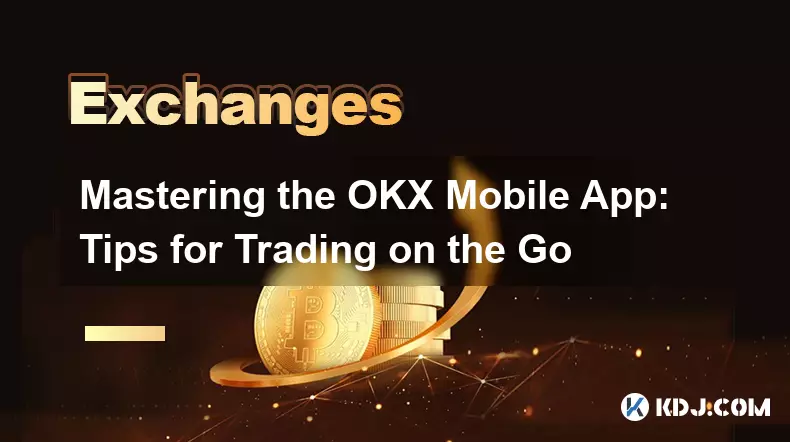-
 bitcoin
bitcoin $100977.009184 USD
-2.05% -
 ethereum
ethereum $3282.009150 USD
-3.23% -
 tether
tether $0.999813 USD
-0.02% -
 xrp
xrp $2.208254 USD
-4.89% -
 bnb
bnb $951.411089 USD
0.55% -
 solana
solana $155.761205 USD
-2.84% -
 usd-coin
usd-coin $1.000217 USD
0.02% -
 tron
tron $0.284475 USD
-1.28% -
 dogecoin
dogecoin $0.162363 USD
-1.53% -
 cardano
cardano $0.533988 USD
-0.47% -
 hyperliquid
hyperliquid $39.174339 USD
-3.22% -
 chainlink
chainlink $14.724828 USD
-1.16% -
 bitcoin-cash
bitcoin-cash $477.297986 USD
-1.28% -
 zcash
zcash $554.227426 USD
17.30% -
 ethena-usde
ethena-usde $0.998995 USD
-0.03%
How to understand the Bybit order book?
The Bybit order book shows real-time buy and sell orders, helping traders gauge market depth, liquidity, and potential price movements through bid-ask spreads and volume levels.
Nov 05, 2025 at 02:18 am

Understanding the Structure of the Bybit Order Book
1. The Bybit order book displays a real-time list of buy and sell orders for a specific trading pair, arranged by price level. This visual representation allows traders to observe market depth and anticipate potential price movements based on supply and demand dynamics.
2. On the left side of the interface, the bid prices are listed in descending order, showing the highest price buyers are willing to pay. On the right side, ask prices appear in ascending order, indicating the lowest prices sellers are offering. This dual-sided layout enables quick assessment of current market sentiment.
3. Each price level includes information about the volume of contracts or coins available at that price. Larger volumes at certain levels often act as support or resistance zones, influencing short-term price behavior when approached.
4. The order book is continuously updated as new orders are placed, modified, or executed. Market orders remove liquidity by matching with existing limit orders, while limit orders add liquidity by waiting to be filled.
5. Traders can switch between different contract types such as linear and inverse perpetuals, each affecting how margin and profit calculations appear alongside the order book data.
Interpreting Liquidity and Market Sentiment
1. A dense cluster of bids at higher price levels suggests strong buying interest, potentially signaling bullish momentum if those orders begin to execute. Conversely, a thick wall of asks may indicate selling pressure that could cap upward movement.
2. Sudden appearance of large limit orders, often referred to as 'iceberg orders,' can distort perception of true market depth but may reveal institutional participation. These hidden orders only display a portion of their total size, preventing premature price reactions.
3. Rapid disappearance of bids or asks might indicate aggressive market-taking activity, possibly driven by news events or algorithmic strategies. Monitoring these shifts helps identify accumulation or distribution phases.
4. The spread between the best bid and best ask reflects market efficiency. Narrow spreads typically occur during high-volume periods and suggest tight competition between buyers and sellers.
5. Price levels with minimal depth are more susceptible to slippage, especially during volatile conditions. Traders placing large market orders should assess this risk before execution.
Using the Order Book for Trade Execution
1. Aggressive traders may use market orders to enter positions immediately, accepting the current ask (for longs) or bid (for shorts). However, this approach risks higher slippage in illiquid markets.
2. Limit orders allow precise control over entry and exit points by setting a desired price. Placing a buy limit below the current market price or a sell limit above it increases the chance of favorable fills over time.
3. Traders watching for order book imbalances—such as significantly larger bids than asks—may anticipate short-term price direction based on pending order concentration. This tactic works best when combined with volume analysis and recent trade flow.
4. Time & Sales data, when available alongside the order book, provides context for executed trades, helping distinguish between retail-sized transactions and whale activity.
5. Scalpers often monitor micro-changes in the top-of-book, reacting within milliseconds to shifts in queue position or sudden order removal, leveraging speed and precision for small but frequent gains.
Frequently Asked Questions
What does a red flash in the Bybit order book indicate? A red flash usually appears when a sell order is executed at the best bid price, signaling downward price pressure. It reflects a transaction where a market seller met a standing buyer.
How can I tell if an order is from a bot or a human trader? While direct identification isn’t possible, repetitive patterns such as rapid cancellation and repositioning of limit orders near key levels often suggest automated trading behavior.
Why do some price levels vanish instantly on the order book? Orders disappear when they are either filled or canceled. High-frequency traders frequently cancel unfilled orders to adjust strategy, creating fleeting price levels that don't result in trades.
Can the order book be manipulated? Yes, spoofing occurs when traders place large visible orders without intent to execute, aiming to create false impressions of supply or demand. Regulatory bodies discourage this practice, but it remains a concern in less transparent markets.
Disclaimer:info@kdj.com
The information provided is not trading advice. kdj.com does not assume any responsibility for any investments made based on the information provided in this article. Cryptocurrencies are highly volatile and it is highly recommended that you invest with caution after thorough research!
If you believe that the content used on this website infringes your copyright, please contact us immediately (info@kdj.com) and we will delete it promptly.
- Layer 2 Coins: Will There Be a Potential Explosion by 2026?
- 2025-11-07 16:50:02
- Filecoin, ICP, and the AI Infrastructure Renaissance: Is History Repeating?
- 2025-11-07 16:50:02
- Bitcoin's Wild Ride: Surges, Zeros, and the Search for Stability
- 2025-11-07 17:05:01
- XRP, Bitcoin, and the Rally: What's the Deal, New York?
- 2025-11-07 17:25:01
- Filecoin, DePIN, and a Technical Breakout: What's the Buzz?
- 2025-11-07 17:05:01
- Bitcoin Wobbles: ETF Outflows and the $100K Line in the Sand
- 2025-11-07 18:05:01
Related knowledge

Common Mistakes to Avoid on OKX: A Guide for New Traders
Nov 04,2025 at 03:37pm
Understanding the Interface Before Trading1. New traders often jump into placing orders without fully exploring the OKX platform layout. Taking time t...

OKX TradingView Integration: A Guide to Advanced Chart Analysis
Nov 02,2025 at 03:37am
OKX and TradingView: Bridging the Gap for Professional Traders1. OKX, one of the leading cryptocurrency exchanges, has integrated with TradingView to ...

Finding Your OKX Deposit Address: A Quick and Safe Guide
Nov 05,2025 at 01:15pm
Finding Your OKX Deposit Address: A Step-by-Step Process1. Log into your OKX account using your registered credentials. Ensure you are accessing the o...

OKX Savings Guide: A Low-Risk Strategy for Earning Crypto
Nov 05,2025 at 06:55am
Understanding OKX Savings and Its Role in Crypto Earnings1. OKX Savings offers users a straightforward method to earn passive income by leveraging idl...

OKX Account Deletion: A Secure Guide to Closing Your Account
Nov 05,2025 at 08:44am
Understanding the Implications of Account Closure1. Closing your OKX account permanently removes access to all associated trading features, including ...

Mastering the OKX Mobile App: Tips for Trading on the Go
Nov 05,2025 at 01:19am
Streamlined Navigation for Efficient Trading1. The OKX mobile app features a clean and intuitive interface that allows traders to access key functions...

Common Mistakes to Avoid on OKX: A Guide for New Traders
Nov 04,2025 at 03:37pm
Understanding the Interface Before Trading1. New traders often jump into placing orders without fully exploring the OKX platform layout. Taking time t...

OKX TradingView Integration: A Guide to Advanced Chart Analysis
Nov 02,2025 at 03:37am
OKX and TradingView: Bridging the Gap for Professional Traders1. OKX, one of the leading cryptocurrency exchanges, has integrated with TradingView to ...

Finding Your OKX Deposit Address: A Quick and Safe Guide
Nov 05,2025 at 01:15pm
Finding Your OKX Deposit Address: A Step-by-Step Process1. Log into your OKX account using your registered credentials. Ensure you are accessing the o...

OKX Savings Guide: A Low-Risk Strategy for Earning Crypto
Nov 05,2025 at 06:55am
Understanding OKX Savings and Its Role in Crypto Earnings1. OKX Savings offers users a straightforward method to earn passive income by leveraging idl...

OKX Account Deletion: A Secure Guide to Closing Your Account
Nov 05,2025 at 08:44am
Understanding the Implications of Account Closure1. Closing your OKX account permanently removes access to all associated trading features, including ...

Mastering the OKX Mobile App: Tips for Trading on the Go
Nov 05,2025 at 01:19am
Streamlined Navigation for Efficient Trading1. The OKX mobile app features a clean and intuitive interface that allows traders to access key functions...
See all articles










































































